The Philodendron Pink Princess is at the top of every home gardener’s list, due to its attractive and exquisite flowers. The plant is incredibly unusual in the world of plants, with waxy, dark green, heart-shaped leaflets variegated with bright pink leaves. This houseplant is appropriately nicknamed the “Pink Princess.” The pinkish tint on the leaves is caused by a deficiency of chlorophyll. But for the plants to photosynthesize, the leaves also need to be relatively greenish.
In addition to being gorgeous and unique, Pink Princess Philodendrons are very convenient to take care of. This article will walk you through a complete guide on how to effectively take care of them.
About Philodendron Pink Princess

Source: marieclaire.com
Let us first learn in detail about this gorgeous houseplant. The Philodendron Pink Princess belongs to the Araceae, sometimes known as the Aroid family. It is a hybrid made from other species that are indigenous to Central and South America. Pink princess philodendron bears flowers if planted outdoors. However, they seldom bloom inside since the bracts are tiny in comparison to the leaves and stems.
The Pink Princess is a perennial shrub that may reach a height of up to 4 feet when planted in a container. It often remains at around 2 feet tall, when grown indoors. It has aerial roots that emerge from the nodes and maroonish stems and stalks. New leaflets grow with a red tint.
10 Effective Tips to Take Care of Philodendron Pink Princess
Understanding how to protect and care for your pink princess philodendron is essential for preserving its hot pink parti-colour leaflets and the overall health of the plant.
1. Light Requirements:
Source: theplantparlor.store
Consider the site of the parent plant to determine the optimal lighting conditions for the Pink Princess Philodendron. The vining plant is unique to Columbia’s lush tropical rainforests, where it forms part of the under bush. Pick a place that gets a good amount of indirect light for several hours. The pink princess philodendron can withstand a few hours of direct sunshine when cultivated indoors.
This will aid in enhancing its variegation. You should preferably plant them at a spot where they receive filtered or indirect light for at least six hours every day. The ideal location is in a room with an east or west facing window that receives moderate daylight.
2. Soil Type for Potting:
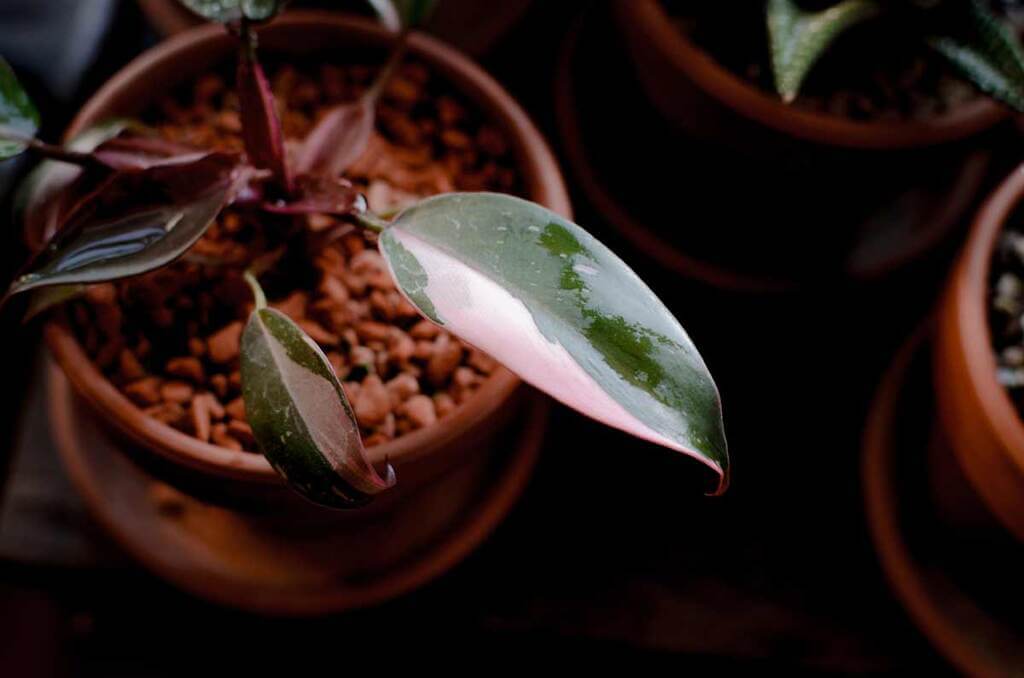
Source: natureofhome.com
Philodendrons should be planted in nutrient-rich soil that retains moisture without being waterlogged. Pink Princess will thrive on an Aroid potting mix. You may buy one that has been specially prepared for aroids or make your own mix. A mixture of one part regular potting soil, one part orchid bark, and one part perlite, is appropriate for this tropical houseplant. Pink Philodendron plants have underground roots as well. As a result, you may grow your pink princess in a soil-free mixture like peat-perlite or sphagnum moss.
3. Water:

Source: plantly.io
First and foremost, you must avoid putting your pink princess in wet soil, since they are subject to rot disease. Although the plant is quite flexible, one thing it cannot stand is being overwatered. Due to the common misconception that tropical plantsrequire more moisture, many people tend to overwater the plant. However, being a vining plant, Pink Princess Philodendron can survive brief spells of dehydration.
The idea is to maintain the soil sufficiently and regularly damp so that the plant may thrive rapidly. But how can you know when it’s time to water? You may test the moisture content of the soil by inserting your finger up to an inch deep into the potting mix. It’s time to water if the top layer appears entirely dry.
4. Humidity Conditions:
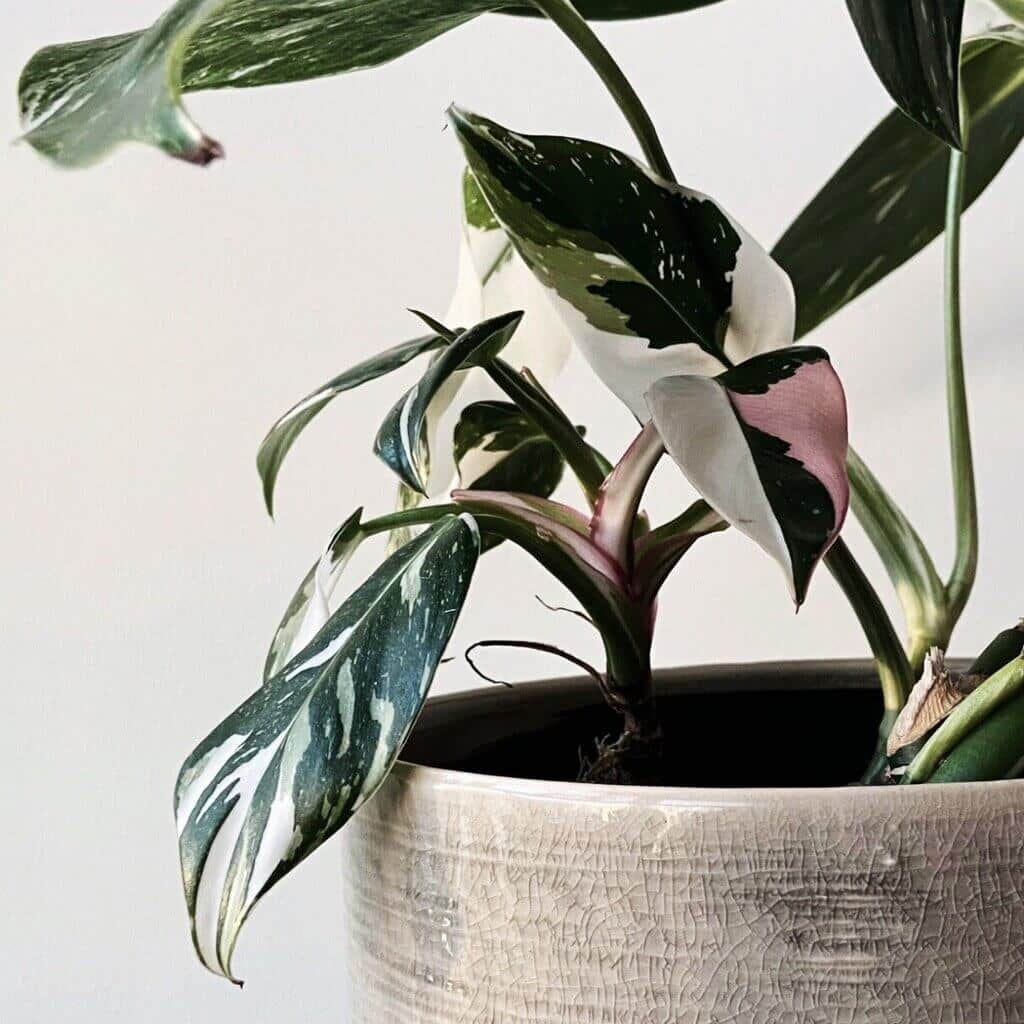
Source: squarespace-cdn.com
Pink princess philodendron thrives in hot and humid climates. Typical room temperatures and humidity levels are usually sufficient for these resilient plants. Most people do not live in such a tropical climate. The edges of leaves turn dark if the plant loses moisture or the inability of soil to absorb the lost moisture. There are several very simple remedies to enhance the humidity in your house.
A humidifier, for example, may increase relative humidity levels by 50 to 60 percent, producing the ideal habitat for Philodendron Pink Princess. Alternatively, you might plant them in clusters to create a microclimate. Regular misting can also provide them with the ideal moisture conditions.
5. Fertilizer:

Source: twopeasinacondo.com
It does not generally require fertilizer but may require occasional supplement throughout the growing season. You should give your plants a 1/2 dosage of a balanced nutrient solution, such as an indoor plant formula or compost tea, every two weeks. In the spring and summer, 1-2 doses of delayed-release granules can also be used.
Feeding them should be discontinued in the autumn and winter seasons to prevent feeble and droopy growth. A fertilizer with a high nitrogen concentration will promote rapid growth, but the new shoots will be uniform and dark green in colour, instead of semi-pink.
6. Propagation Methods:
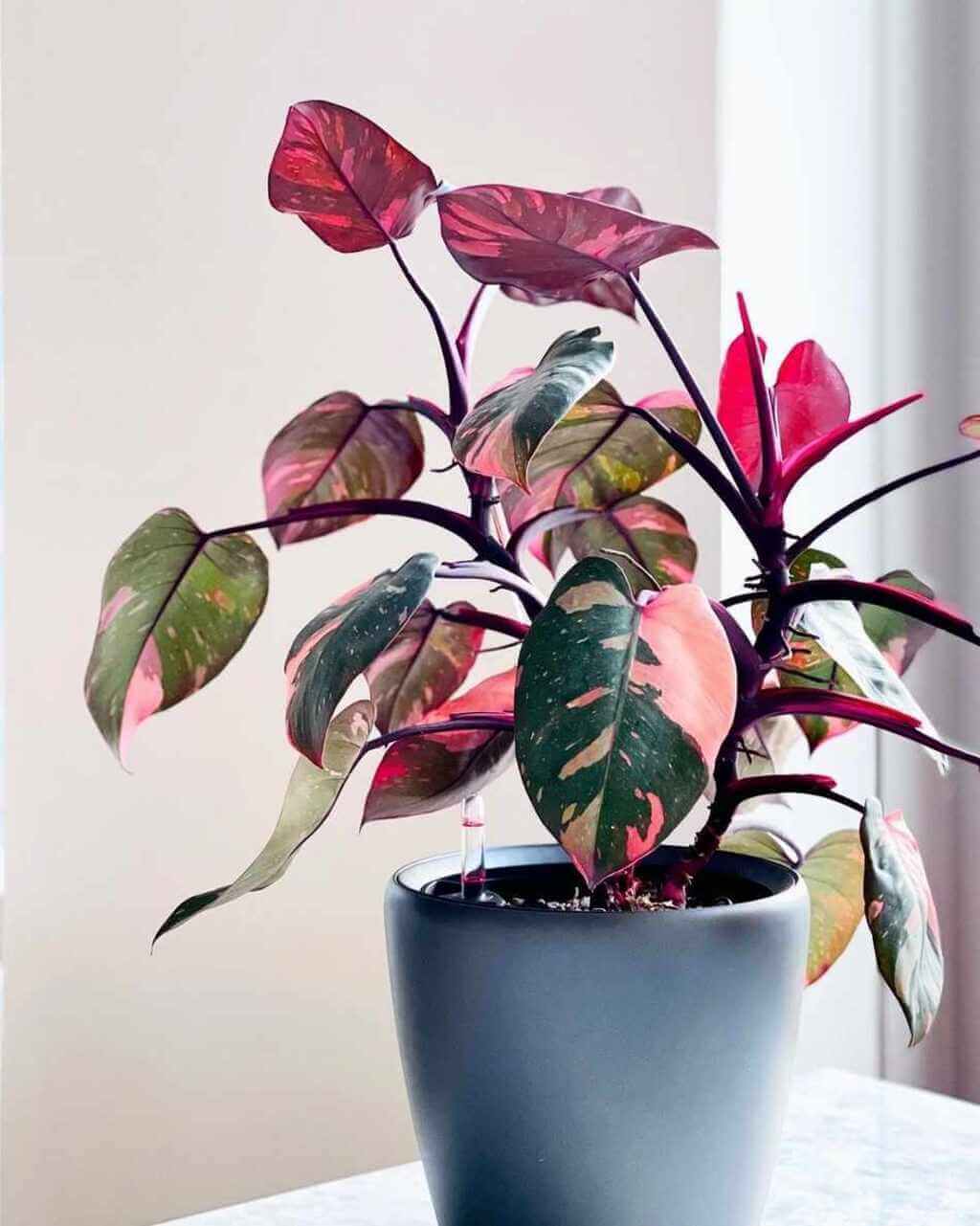
Source: planteresting.com
The pink princess may be quickly multiplied by stem cuttings, as is the case with the majority of philodendron species. Propagation results in voluminous plants and can promote variegation. Additionally, it may help you grow a new shrub to give to and create a micro-habitat. If your plant’s leaves have begun to regress, you must use this approach immediately. If the root ball becomes too packed, you can divide it.
7. Potting and Replanting:
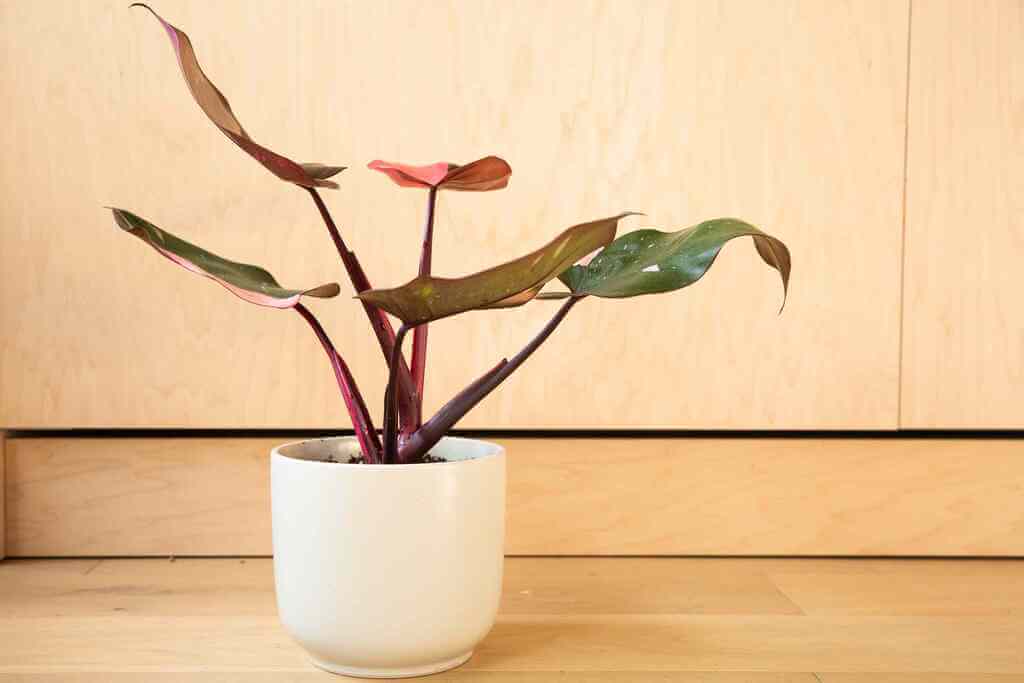
Source: thespruce.com
The Philodendron Pink Princess plant will thrive in any planter with an effective drainage system. Due to their permeability, clay pots are the most preferred over other materials. Drainage holes or breathers should be large enough to allow water to flow out quickly.
Make careful to line the bottom of the planter with a layer of tiny pebbles or rocks before planting your plant. This preventative measure is advised, particularly when working with a plant as valuable and uncommon for its pink leaves.
Pink Princess spreads rapidly if given the appropriate growth conditions. The roots develop at a comparable rate to the leaves, resulting in the plant becoming rootbound within two years in the same planter. As a result, it must be repotted every two years.
8. Pruning:
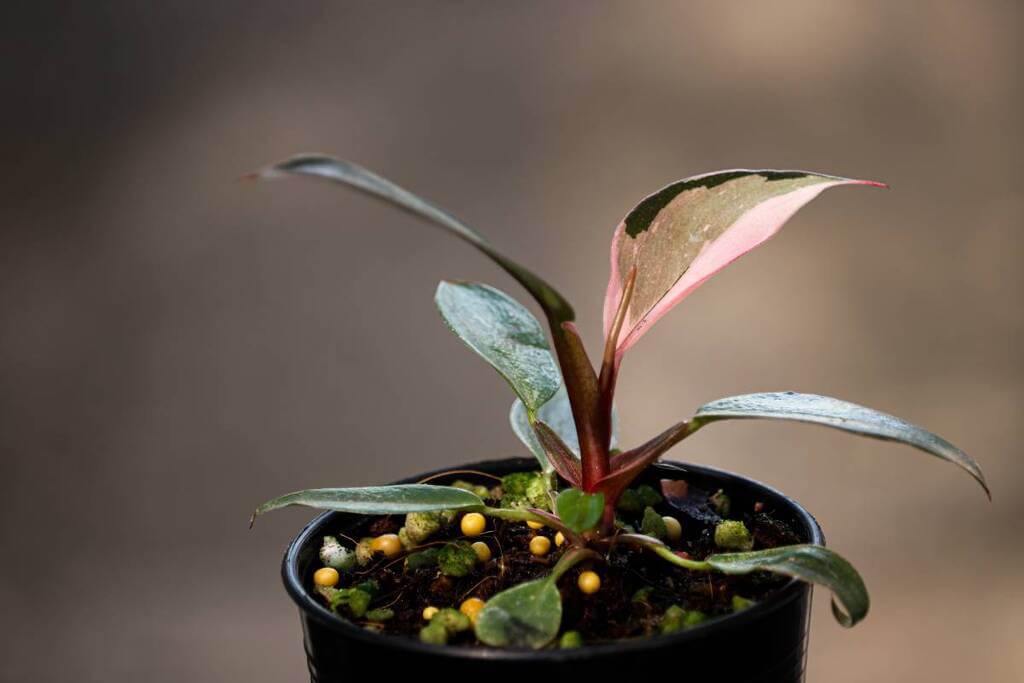
Source: plantsbeginner.com
Trimming is essential for this houseplant. The Pink Princess Philodendron has a tendency to grow into a vine, but with the right clipping, it can easily be made voluminous. Pruning your plant is best done in the spring or autumn. This is right before and after the planting season. You can remove any yellow or dead leaves. Pruning can foster rapid growth while also preventing droopy stems from detracting from the plant.
You may also trim your Pink Princess to keep its variegation consistent. The most equally semi-coloured leaf should be removed a little above its node. For instance, if the topmost foliage on your plant is pink or all green, you may consider selectively pruning to get a more uneven pattern. Trimming above your preferred leaf causes the emerging leaf to imitate the color of the leaf underneath it.
9. Pest and Disease Control:

Source: wikimedia.org
The Pink Princess is sensitive to a variety of typical houseplant diseases and pests. Prominent diseases include rusty spot and root rot, both of which are brought on by fungal infections and excess watering, respectively. Mealybugs, scale, spider mites, aphids, and fungus gnats are a few examples of prevalent pests that affect the health of this houseplant. These insects may be eliminated naturally by DIY insecticide soap or just chopping off the infected parts.
The browning of the edges is another issue with Pink Princess Philodendron. The centre of the leaves developing brown patches often indicates too direct sun exposure. Due to the diffused sunshine that these plants are accustomed to, any harsh sunlight exposure can scorch the leaves. Move your plant away from the light or block the window with a thin curtain if the patches only develop on the leaves that are near to the source of sunlight.
10. Climbing Support:

Source: ohiotropics.com
Philodendron is naturally a vining plant, so it is beneficial to provide it with a ladder or frame to climb on. The plant rises using its aerial roots and grows best when it has some type of support that permits it to do so. Similar to other vines, the Pink Princess is suitable for growing on a pole so it may climb, or it can be simply allowed to drop down. You may consider using a moss pole since it can be easily expanded when the plant outgrows it and is collapsible.
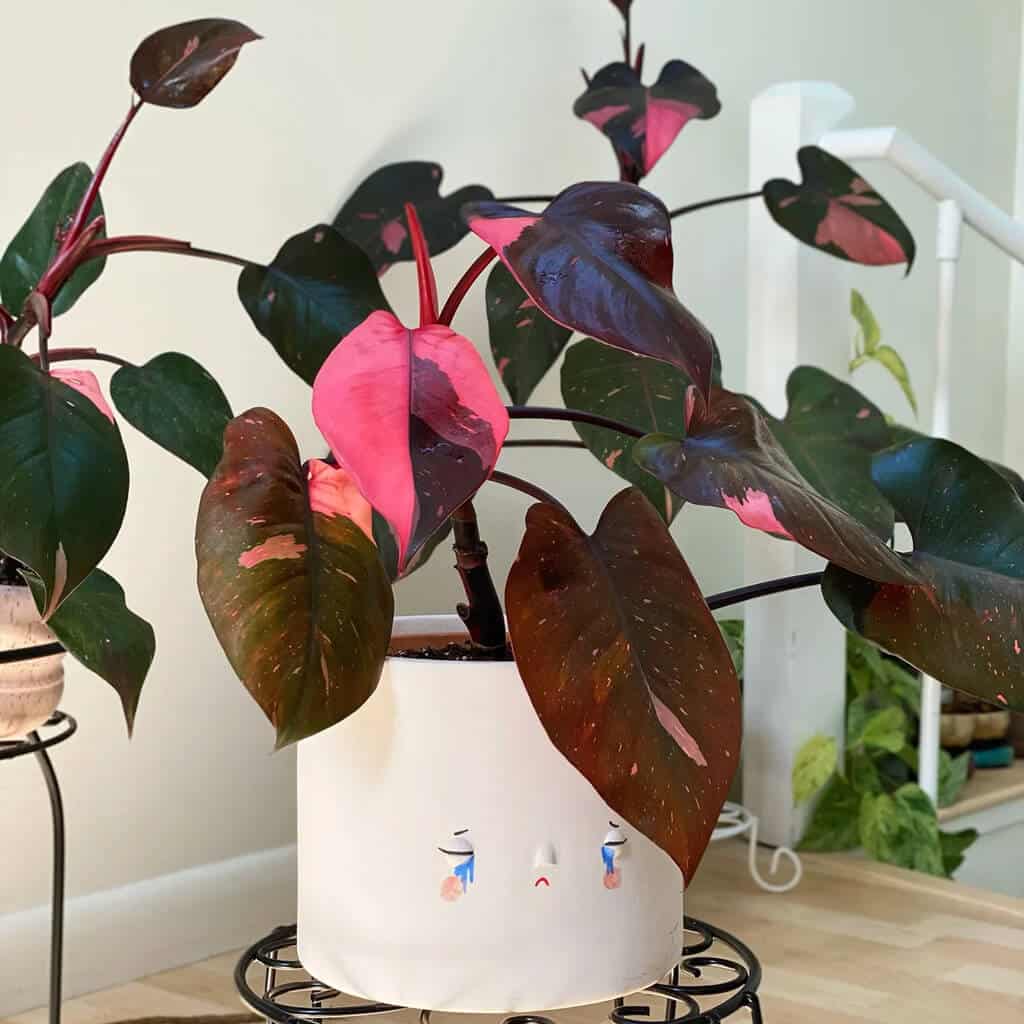
Source: domino.com
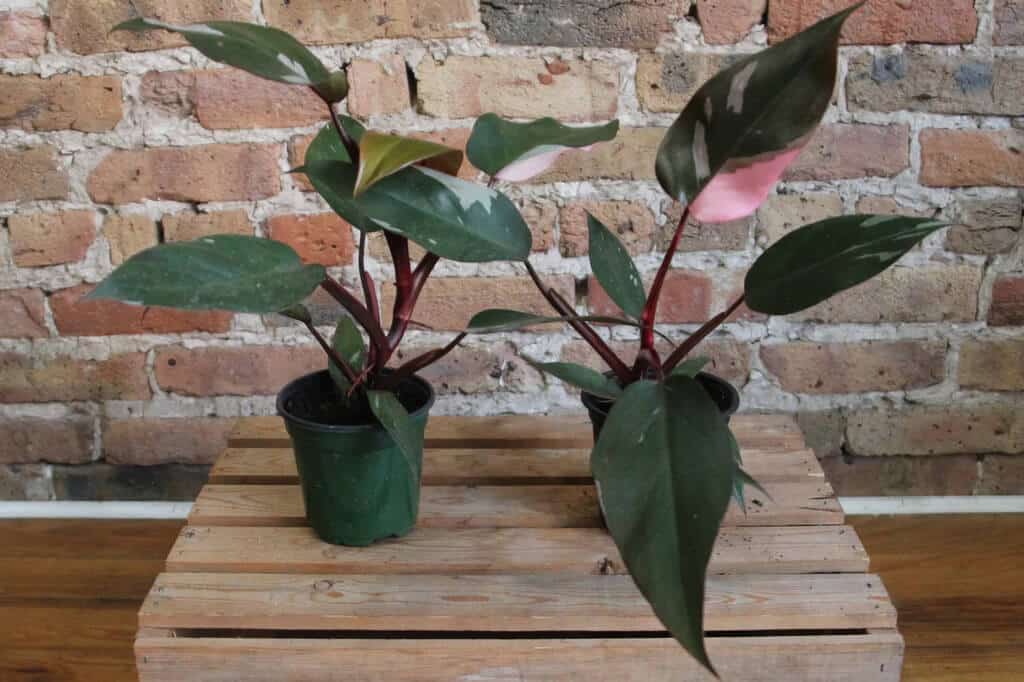
Source: shopify.com

Source: contentstack.com

Source: thespruce.com

Source: bustlingnest.com

Source: sndimg.com
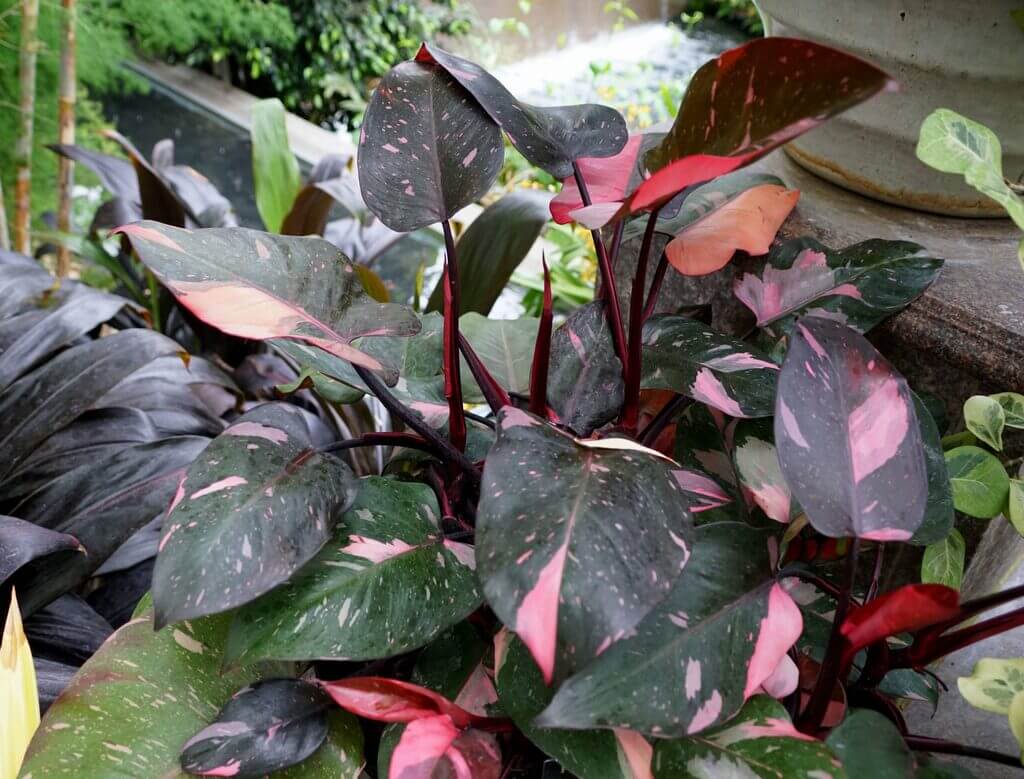
Source: greengardentribe.com

Source: thespruce.com
Also Read: 10 Best Large Indoor Plants to Grow in Your Home!
You Are Undoubtedly Already Familiar with Philodendron Pink Princess Care Tips!

Source: thespruce.com
The Pink Princess Philodendrons are popular houseplants owing to their beautiful pink foliage. The plant has an unrivaled magnificence, making the cost and efforts spent meeting the needs of this regal plant worthwhile. If you stumble across one of these magnificent pink and green leafed plants, make sure to follow the above guidelines to keep it healthy for a long time.
FAQ’s1. How Can I Make My Philodendron Pink Princess More Pinkish?
Provide your Philodendron with strong, indirect light for at least six hours each day, either by placing it beside a south-facing window or under grow lights. Pink leaves will also require at least 65% humidity to unfold effectively.
2. Is Philodendron Pink Princess Toxic to Dogs and Cats?
Any animal that consumes any portion of the Pink Princess plant will die. Dogs who consume a part of this plant may experience coughing, foaming, drooling and irritation of the skin around the mouth and face.
3. Is There a Difference Between the Pink Congo and the Pink Princess Philodendron?
Pink Congo Philodendron and the Pink Princess Philodendron are not the same plants. The former is also not worth purchasing since it is produced chemically. Unethical sellers may charge a lot of money for essentially a common Philodendron.
4. What Can You Do to Protect the Pink Princess from Reverting?
In case, Pink Princess has reverted, it means the plant isn’t getting enough light. The plant has to be relocated to a location with more direct sunlight.
5. How Do I Produce a Variegated Philodendron?
The more conventional and reliable method of achieving variegation is to take cuttings from branches with more variegated leaves rather than the all-white version and keep multiplying the plants.
6. Where Can I Purchase Pink Princess Philodendron?
Bare root cuttings are commonly found on internet markets such as Facebook Marketplace. It is recommended to get in touch with expert growers in your region to learn where you can buy or source a real plant because it is challenging to determine the genuineness of the plant.
7. Why Is My Plant Becoming Droopy?
Droopy growth indicates that your plant isn’t getting enough light, which causes the leaves to strive for additional light. If your plant is in a dim area, move it to a brighter spot to avoid lanky growth.
To know more about Home improvement ideas, Cleaning and decoration tips visit ArchitecturesIdeas.
For daily updates, follow us on our Instagram page @architectures_idea.










Read 0 comments and reply